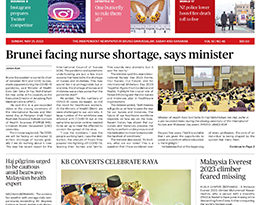MEDICAL: YOUR DOSE OF MEDICINE – Aspirin and Diabetes By Charles C. Chante, MD
Many patients with diabetes who could benefit from low-dose aspirin therapy may not be getting it – and many who are getting aspirin should not be, according to data presented at the annual meeting of the European Association for the Study of Diabetes.
A large, randomized trial concluded that 21 percent of diabetes patients who qualified for aspirin therapy for cardiovascular risk reduction were not getting it, and that it was contraindicated in almost 60 percent of those who were taking it, reported at the meeting.
Balancing the risks and benefit of aspirin therapy is not an easy challenge, according to a health behavior researcher at HealthPartners Institute, Minneapolis. The clinical information necessary for the assessment is “rather lengthy, and not always readily available in primary care settings,” and it’s clear from this study that clinicians could use some help in this area. Unfortunately, the electronic algorithm tested, which was meant to improve appropriate aspirin prescribing, didn’t improve the situation very much.
At the final visit in the diabetes group, the total proportion of patients using aspirin was higher than at the first visit. However, that was the case regardless of whether patients were over or under using aspirin at the first visit.
The aspirin findings were part of a large, randomized trial testing the algorithm as a way to reduce cardiovascular risk factors. The study was conducted in 19 primary care practices.
The decision-making algorithm, Cardiovascular Wizard, uses electron health records to identify and advise patients with uncontrolled cardiovascular risk factors. Priorities and clinical recommendations are displayed for provider and patient in the hope of facilitating shared decision making.
One of the Wizard’s algorithms concerns aspirin prescribing. It is programmed with data from the United States Preventive Service Task Force, and recommends aspirin if cardiovascular risk scores are high and if consistent with providing a benefit greater than the risk of gastrointestinal bleeding. Aspirin is not recommended if the benefit is determined to be low or if major contraindications are present, including anticoagulant use of history of intracerebral hemorrhage.
The tool also alerts providers to the presence of other potential risks including aspirin allergy or intolerance, history of GI bleeds or risk conditions, and the concomitant use of nonsteroidal anti-inflammatory drugs.
The study comprised 11,000 adults 4,000 of whom had diabetes. The remainder had high-risk, reversible cardiovascular risk factors (hypertension, dyslipidemia, or tobacco use). Each group was randomized to either cardiovascular risk assessment by usual care or with the Cardiovascular Wizard program.
The aspirin sub study looked at aspirin use at the baseline visit and patient’s final, one year follow-up visit. At both visits, aspirin use was documented, and the clinician used the Wizard to assess whether or not it was indicated.
At the baseline visit, 71 percent of the diabetes group was using aspirin. However, according to the Wizard tool, more than one-third of them should not have been taking it – and among these, 57 percent were doing so. Among the remaining two-third of patients, all whom should have been using aspirin, 21 percent were not taking it.
Among the patients with reversible high-risk factors, 27 percent were using aspirin. However, according to the Wizard tool, the drug was contraindicated in 34 percent of those patients. Most importantly, however, among those for whom aspirin was indicated, only 25 percent were using it – so, about 75 percent under usage.
By the one-year follow-up visit, the situation was not much changed, despite the tool’s recommendations. Among those with diabetes, 56 percent in the usual care group and 60 percent in Wizard group were still overusing aspirin. Underuse was occurring in 21 percent of the usual care group and 17 percent of the Wizard group.
Patients with reversible high-risk factors fared a little better at one year, especially those who, at baseline, should have been taking aspirin but were not. Among these 10 percent in the usual care group and 13 percent in the Wizard group had started taking aspirin.
The results were a bit of a disappointment, but they don’t invalidate the investigators’ faith in an algorithmic advising system.
We do think that electronic health record tools like this can help providers follow guidelines and improve the quality of their aspirin recommendations and prescribing, and hopefully reduce cardiovascular events and aspirin-related hazards. Unfortunately, that didn’t happen here in the diabetes patients and the results in the second group were not stellar.
The Wizard development team will be tweaking the tool to clarify some of the choices available as it guides patients and providers through the algorithm, in hopes of improving its efficacy.
COURTESY:
The Philippine Star
January 7, 2018 – 12:00am
.
NOTE : All photographs, news, editorials, opinions, information, data, others have been taken from the Internet ..aseanews.net | [email protected] |
For comments, Email to :
Al Bulario | [email protected] | Contributor |











